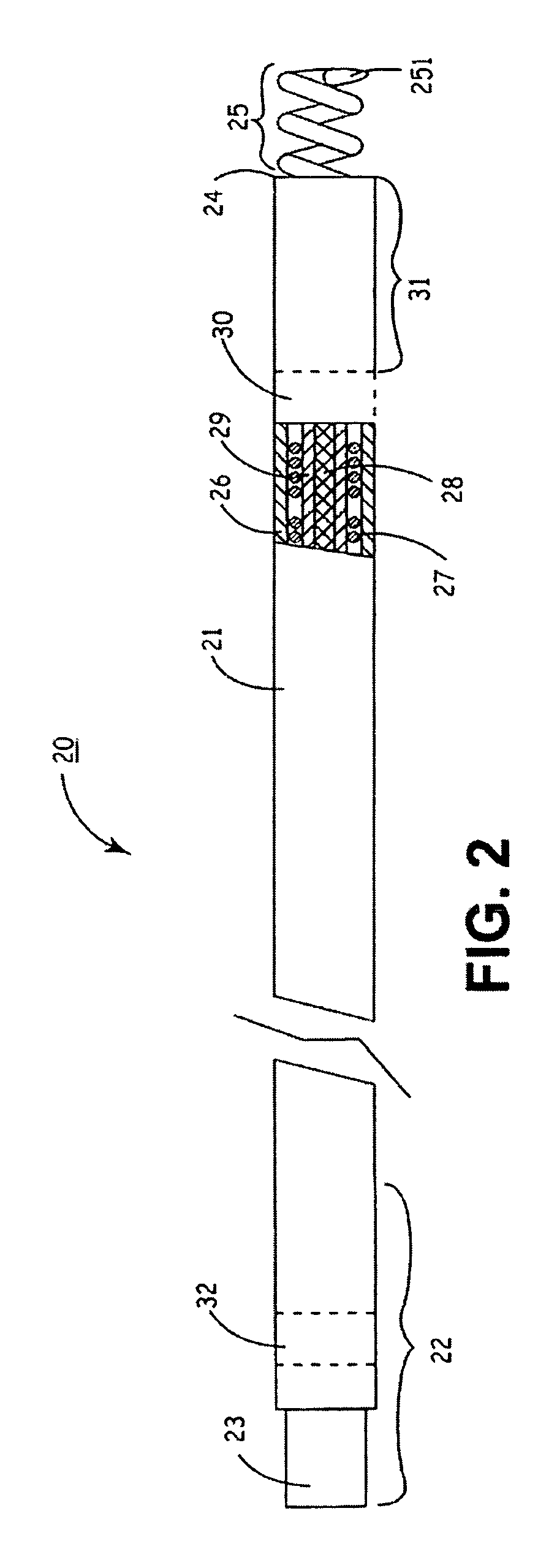Guide catheters for accessing cardiac sites
a catheter and guide technology, applied in the field of bilumen guide catheters, can solve the problems of difficult to aim the distal fixation mechanism toward myocardial tissue, lack of pushability, and lack of column strength, so as to achieve sufficient column strength and simplify the introduction of cardiac leads.
- Summary
- Abstract
- Description
- Claims
- Application Information
AI Technical Summary
Benefits of technology
Problems solved by technology
Method used
Image
Examples
Embodiment Construction
[0033] In the following detailed description, references are made to illustrative embodiments for carrying out the invention. It is understood that other embodiments may be utilized without departing from the scope of the invention. The invention and its preferred embodiments may be employed in implantation of unipolar, bipolar or multi-polar, endocardial, cardiac pacing leads, cardioversion / defibrillation leads or monitoring leads having one or more pace / sense electrode(s) or sense electrode(s), respectively, at or adjacent the distal lead end and an active fixation mechanism that is to be affixed into the myocardium. Moreover, other sensors for sensing a physiologic parameter may be incorporated into the lead body. An insulated electrical conductor extending proximally through the lead body to connector element of a lead proximal end connector assembly is coupled to each such pace / sense electrode, sense electrode, cardioversion / defibrillation electrode and sensor. The proximal con...
PUM
 Login to View More
Login to View More Abstract
Description
Claims
Application Information
 Login to View More
Login to View More - R&D
- Intellectual Property
- Life Sciences
- Materials
- Tech Scout
- Unparalleled Data Quality
- Higher Quality Content
- 60% Fewer Hallucinations
Browse by: Latest US Patents, China's latest patents, Technical Efficacy Thesaurus, Application Domain, Technology Topic, Popular Technical Reports.
© 2025 PatSnap. All rights reserved.Legal|Privacy policy|Modern Slavery Act Transparency Statement|Sitemap|About US| Contact US: help@patsnap.com



